 W
WAdasaurus is a genus of dromaeosaurid dinosaur that lived in Asia during the Late Cretaceous period about 70 million years ago. The genus is known from two partial specimens found in the Nemegt Formation of Mongolia that were partially described in 1983 by the paleontologist Rinchen Barsbold.
 W
WAlioramus is a genus of tyrannosaurid theropod dinosaurs from the Late Cretaceous period of Asia. The type species, It currently contains two species. A. remotus is known from a partial skull and three foot bones recovered from the Mongolian Nemegt Formation, which was deposited in a humid floodplain about 70 million years ago. These remains were named and described by Soviet paleontologist Sergei Kurzanov in 1976. A second species, A. altai, known from a much more complete skeleton, was named and described by Stephen L. Brusatte and colleagues in 2009. Its relationships to other tyrannosaurid genera are unclear, with some evidence supporting a hypothesis that Alioramus is closely related to the contemporary species Tarbosaurus bataar.
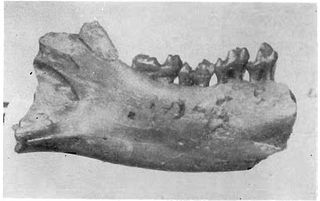 W
WAltanius is a genus of extinct primates found in the early Eocene of Mongolia. Though its phylogenetic relationship is questionable, many have placed it as either a primitive omomyid or as a member of the sister group to both adapoids and omomyids. The genus is represented by one species, Altanius orlovi, estimated to weigh about 10–30g from relatively well-known and complete dental and facial characteristics.
 W
WAltirhinus is a genus of iguanodontian ornithopod dinosaur from the Early Cretaceous Period of Mongolia.
 W
WAmtosaurus is a genus of ornithischian dinosaur based on a fragmentary skull collected from the Upper Cretaceous Bayan Shireh Formation of Mongolia and originally believed to represent an ankylosaurid. Hadrosaurid affinities have also been suggested. However, per Parish and Barrett, this specimen is too fragmentary to be reliably classified beyond an indeterminate ornithischian. A second species assigned to the genus, A. archibaldi, has become the basis of a valid ankylosaurid taxon, Bissektipelta.
 W
WAtrypa is a genus of brachiopod with shells round to short egg-shaped, covered with many fine radial ridges, that split further out and growthlines perpendicular to the costae and 2-3 times wider spaced. The pedunculate valve is a little convex, but tends to level out or even become slightly concave toward the anterior margin. The brachial valve is highly convex. There is no interarea in either valve. Atrypa was a cosmopolitan and occurred from the late Lower Silurian (Telychian) to the early Upper Devonian (Frasnian). Other sources expand the range from the Late Ordovician to Carboniferous, approximately from 449 to 336 Ma. A proposed new species, A. harrisi, was found in the trilobite-rich Floresta Formation in Boyacá, Colombia.
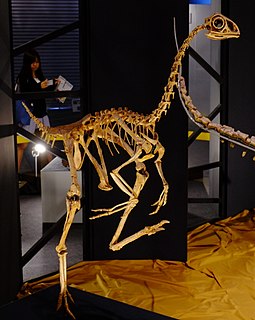 W
WAvimimus, meaning "bird mimic", is a genus of oviraptorosaurian theropod dinosaur, named for its bird-like characteristics, that lived in the late Cretaceous in what is now Mongolia, around 85 to 70 million years ago.
 W
WBagaraatan is a genus of theropod dinosaur from the Late Cretaceous period. Its fossils were found in the Nemegt Formation of Mongolia. Bagaraatan may have been around 3 to 4 metres in length.
 W
WBeg is a genus of neoceratopsian dinosaur from the early Cretaceous Period of Mongolia. The genus contains a single species, Beg tse, known from a partial skull and very fragmentary postcrania. Beg represents the most basal neoceratopsian currently known.
 W
WCatopsbaatar is a genus of multituberculate, an extinct order of rodent-like mammals. It lived in what is now Mongolia during the late Campanian age of the Late Cretaceous epoch, about 72 million years ago. The first fossils were collected in the early 1970s, and the animal was named as a new species of the genus Djadochtatherium in 1974, D. catopsaloides. The specific name refers to the animal's similarity to the genus Catopsalis. The species was moved to the genus Catopsalis in 1979, and received its own genus in 1994. Five skulls, one molar, and one skeleton with a skull are known; the last is the genus' most complete specimen. Catopsbaatar was a member of the family Djadochtatheriidae.
 W
WChulsanbaatar is a genus of mammal from the Cretaceous of Mongolia. It lived during the Mesozoic, also known as the "age of the dinosaurs." This small creature was a member of the extinct order of Multituberculata and is within the suborder Cimolodonta. The genus Chulsanbaatar was named by Kielan-Jaworowska Z. in 1974.
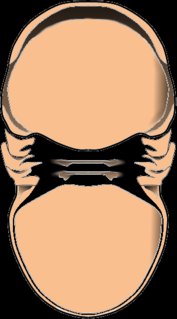 W
WDelgadella is a diminutive trilobite that lived during the late Lower Cambrian and has been found in Russia, Mongolia, Spain, Italy (Sardinia), Portugal, Morocco and Canada (Newfoundland). It can be recognized by its strongly effaced headshield and tailshield, with narrow but distinct furrows and borders along its margins, and three thorax segments.
 W
WDendroolithus is an oogenus of Dendroolithid dinosaur egg found in the late Cenomanian Chichengshan Formation, in the Gong-An-Zhai and Santonian Majiacun Formations of China and the Maastrichtian Nemegt and Campanian Barun Goyot Formation of Mongolia. They can be up to 162 mm long and 130 mm wide. These eggs may have been laid by a Therizinosaur, Sauropod, or Ornithopod. The oospecies "D." shangtangensis was originally classified as Dendroolithus, however, it has since been moved to its own distinct oogenus, Similifaveoloolithus. This oogenus is related with embryos of the theropod Torvosaurus
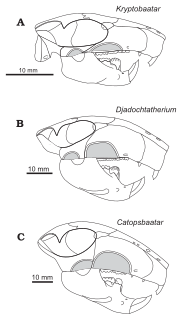 W
WDjadochtatherium is a mammal genus that lived in Mongolia during the Upper Cretaceous. It coexisted with some of the late dinosaurs. This animal was a member of the extinct order of Multituberculata. It is within the suborder of Cimolodonta, and a member of the family Djadochtatheriidae. It was named by G. G. Simpson in 1925, the name meaning "Djadokhta beast".
 W
WElongatoolithus is an oogenus of dinosaur eggs found in the Late Cretaceous formations of China and Mongolia. Like other elongatoolithids, they were laid by small theropods, and were cared for and incubated by their parents until hatching. They are often found in nests arranged in multiple layers of concentric rings. As its name suggests, Elongatoolithus was a highly elongated form of egg. It is historically significant for being among the first fossil eggs given a parataxonomic name.
 W
WErketu is a genus of somphospondylan sauropod dinosaur that lived in Asia during the Late Cretaceous roughly between 102 million and 86 million years ago. Its fossils were found in Mongolia between 2002 and 2003 during a field expedition and first described in 2006; later on in 2010 due to some cervicals that were left behind in the expedition. Erketu represent one of the first sauropods described from the Bayan Shireh Formation. The elongated cervical vertebrae of Erketu seems to indicate that it was the sauropod with the longest neck relative to its body size.
 W
WFaveoolithus is an oogenus of dinosaur egg. The oogenus contains two oospecies, F. ningxiaensis and F. zhangi.
 W
WFavosites is an extinct genus of tabulate coral characterized by polygonal closely packed corallites. The walls between corallites are pierced by pores known as mural pores which allowed transfer of nutrients between polyps. Favosites, like many corals, thrived in warm sunlit seas, feeding by filtering microscopic plankton with their stinging tentacles and often forming part of reef complexes. The genus had a worldwide distribution from the Late Ordovician to Late Permian.
 W
WGarudimimus is a genus of ornithomimosaur that lived in Asia during the Late Cretaceous. The genus is known from a single specimen found in 1981 by a Soviet-Mongolian expedition in the Bayan Shireh Formation and formally described in the same year by Rinchen Barsbold; the only species is Garudimimus brevipes. Several interpretations about the anatomical traits of Garudimimus were made in posterior examinations of the specimen, but most of them were criticized during its comprehensive redescription in 2005. Extensive undescribed ornithomimosaur remains at the type locality of Garudimimus may represent additional specimens of the genus.
 W
WGilmoreosaurus is the name given to a genus of dinosaur from the Cretaceous of Asia. The type species is Gilmoreosaurus mongoliensis. It is believed to be a hadrosaur or iguanodont from the Iren Dabasu Formation of Inner Mongolia, dating to 96 Ma ago. Additional specimens have been described as distinct species, including G. atavus from the Khodzhakul Formation of Uzbekistan and G. arkhangelskyi from the Bissekty Formation. However, these are based on very fragmentary remains, and their classification is dubious. An additional species, G. kysylkumense is sometimes included, though it has also been referred to the related genus Bactrosaurus.
 W
WGobiconodon is an extinct genus of carnivorous mammal from the early Cretaceous. It weighed 10–12 pounds (4.5–5.4 kg) and measured 18–20 inches (460–510 mm). It was one of the largest mammals known from the Mesozoic. Like other gobiconodontids, it possesses several speciations towards carnivory, such as shearing molar teeth, large canine-like incisors and powerful jaw and forelimb musculature, indicating that it probably fed on vertebrate prey; rather uniquely among predatory mammals and other eutriconodonts, the lower canines were vestigial, with the first lower incisor pair having become massive and canine-like. Like the larger Repenomamus there might be some evidence of scavenging.
 W
WGobioolithus is an oogenus of fossil bird egg native to Mongolia. They are small, smooth-shelled, and elongated eggs that were first discovered in the 1960s and early 70s during a series of fossil-hunting expeditions in the Gobi desert. Two oospecies have been described: Gobioolithus minor and G. major. The eggs were probably laid in colonial nesting sites on the banks of rivers and lakes.
 W
WGobiosuchus was a gobiosuchid crocodyliform described in 1972 by Polish palaeontologist Halszka Osmólska. It hails from the Late Cretaceous of Bayn Dzak, in the Gobi Desert of Mongolia.
 W
WGraciliceratops is a genus of neoceratopsian dinosaurs that lived in Asia during the Late Cretaceous period.
 W
WHalysites is an extinct genus of tabulate coral. Colonies range from less than one to tens of centimeters in diameter, and they fed upon plankton.
 W
WHarpymimus is a basal ornithomimosaurian theropod dinosaur from the Early Cretaceous Period of what is now Mongolia. Unlike later, more derived ornithomimosaurs, Harpymimus still possessed teeth, although they appear to have been restricted to the dentary of the lower jaw.
 W
WHeyuannia is a genus of oviraptorid dinosaur that lived during the Late Cretaceous Period in China. It was the first oviraptorid found in that country; most others were found in neighbouring Mongolia. Two species are known: H. huangi, named by Lü Junchang in 2002; and H. yanshini, originally named as a separate genus Ingenia by Rinchen Barsbold in 1981.
 W
WHypercoryphodon is an extinct genus of rhinoceros-sized pantodont native to Late Eocene Mongolia, and was very similar to its ancestor, Coryphodon. Described from a skull, Hypercoryphodon is a quadrupedal hippopotamus-like herbivore that may have been able to adapt its feeding to suit different situations. It is thought to have possibly lived in wetland to forest ecosystems that it might have shared with other herbivores such as dinoceratans like Gobiatherium.
 W
WLambdopsalis bulla is an extinct multituberculate mammal from the Late Paleocene of China and Mongolia. It is placed within the suborder Cimolodonta and is a member of the superfamily Taeniolabidoidea. Fossil remains have been found in the Late Paleocene Nomogen and Khashat Formations in Nao-mugen and Bayn Ulan of China and Mongolia.
 W
WLeptaena is an extinct genus of mid-sized brachiopod that existes from the Dariwilian epoch to the Emsian epoch, though some specimens have been found in strata as late in age as the Tournasian epoch. Like some other Strophomenids, Lepteana were epifaunal, meaning they lived on top of the seafloor, not buried within it, and were suspension feeders.
 W
WMacroolithus is an oogenus of dinosaur egg belonging to the oofamily Elongatoolithidae. The type oospecies, M. rugustus, was originally described under the now-defunct oogenus name Oolithes. Three other oospecies are known: M. yaotunensis, M. mutabilis, and M. lashuyuanensis. They are relatively large, elongated eggs with a two-layered eggshell. Their nests consist of large, concentric rings of paired eggs. There is evidence of blue-green pigmentation in its shell, which may have helped camouflage the nests.
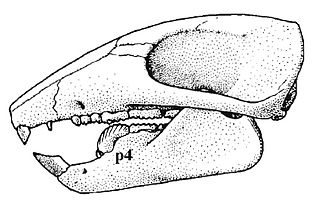 W
WNemegtbaatar is a genus of mammal from the Upper Cretaceous Period of what is now Mongolia. It existed in the company of much larger dinosaurs, found together in the Nemegt Basin. This creature was a member of the extinct order Multituberculata. It is within the suborder Cimolodonta and is a member of the superfamily Djadochtatherioidea. It was a hopping, gerboa-like species.
 W
WNemegtonykus is a genus of alvarezsaurid dinosaur from the Nemegt Formation in Mongolia. The type and only species is Nemegtonykus citus. It is only the second alvarezsaur known from the Nemegt Formation, the other being Mononykus.
 W
WNomingia is a genus of oviraptorid theropod dinosaur hailing from the Late Cretaceous Bugin Tsav Beds of Mongolia.
 W
WOpisthocoelicaudia is a genus of sauropod dinosaur of the Late Cretaceous Period discovered in the Gobi Desert of Mongolia. The type species is Opisthocoelicaudia skarzynskii. A well-preserved skeleton lacking only the head and neck was unearthed in 1965 by Polish and Mongolian scientists, making Opisthocoelicaudia one of the best known sauropods from the Late Cretaceous. Tooth marks on this skeleton indicate that large carnivorous dinosaurs had fed on the carcass and possibly had carried away the now-missing parts. To date, only two additional, much less complete specimens are known, including part of a shoulder and a fragmentary tail. A relatively small sauropod, Opisthocoelicaudia measured about 11.4–13 m (37–43 ft) in length. Like other sauropods, it would have been characterised by a small head sitting on a very long neck and a barrel shaped trunk carried by four column-like legs. The name Opisthocoelicaudia means "posterior cavity tail", alluding to the unusual, opisthocoel condition of the anterior tail vertebrae that were concave on their posterior sides. This and other skeletal features lead researchers to propose that Opisthocoelicaudia was able to rear on its hindlegs.
 W
WOviraptor is a genus of oviraptorid dinosaur that lived in Asia during the Late Cretaceous period. The first remains were collected from the Djadokhta Formation of Mongolia in 1923 during a paleontological expedition led by Roy Chapman Andrews, and in the following year the genus and type species Oviraptor philoceratops were named by Henry Fairfield Osborn. The genus name refers to the initial thought of egg-stealing habits, and the specific name was intended to reinforce this view indicating a preference over ceratopsian eggs. Oviraptor is known from a single partial skeleton, as well as a nest of about fifteen eggs that have been referred to this species. Though numerous specimens have been referred to the genus, only the holotype with eggs and a juvenile are recognised.
 W
WPlutonides Hicks, 1895, is a genus of Middle Cambrian trilobite belonging to the Paradoxididae. In terms of the Scandinavian Middle Cambrian sequence the genus ranges from the Eccaparadoxides oelandicus Biosuperzone (Acadoparadoxides? pinus Biozone on Trwyncynddeiriog headland located 1.3 km SSW of St David’s Cathedral and 500 m east of Porth Clais Harbour - Pen-y-Cyfrwy Member, Newgale Formation, and possibly to middle part of the Mawddachites hicksii Biozone on the Penpleidiau Headland of Caerfai Bay south of St David’s in SW Wales, Locs. TC-1 & CF-1 of Rees et al.,.
 W
WProdinoceras is the earliest known uintathere genus, which lived in the late Paleocene of Mongolia. It was a relatively small uintathere, reaching 2.9 m (9.5 ft) in length. It is also regarded as the most basal uintathere, as, although it had the characteristic fang-like tusks, it had yet to evolve the characteristic knob-like horns.
 W
WPsittacosaurus is a genus of extinct ceratopsian dinosaur from the Early Cretaceous of what is now Asia, existing between 126 and 101 million years ago. It is notable for being the most species-rich dinosaur genus. Up to 12 species are known, from across China, Mongolia, Siberia, and possibly Thailand and Laos. The species of Psittacosaurus were obligate bipeds at adulthood, with a high skull and a robust beak. One individual was found preserved with long filaments on the tail, similar to those of Tianyulong, and scales across the rest of the animal. Psittacosaurus probably had complex behaviours, based on the proportions and relative size of the brain. It may have been active for short periods of time during the day and night, and had well-developed senses of smell and vision.
 W
WSegnosaurus is a genus of therizinosaurid dinosaur that lived in what is now southeastern Mongolia during the Late Cretaceous, about 102–86 million years ago. Multiple incomplete but well-preserved specimens were discovered in the Gobi Desert in the 1970s, and in 1979 the genus and species Segnosaurus galbinensis were named. The generic name Segnosaurus means "slow lizard" and the specific name galbinensis refers to the Galbin region. The known material of this dinosaur includes the lower jaw, neck and tail vertebrae, the pelvis, shoulder girdle, and limb bones. Parts of the specimens have gone missing or become damaged since they were collected.
 W
WShanag is a genus of dromaeosaurid theropod dinosaur from the Early Cretaceous Period of Mongolia.
 W
WSineoamphisbaena is an extinct genus of squamate of uncertain phylogenetic placement. Its fossils are known from the Late Cretaceous deposits in Inner Mongolia, China. Wu et al. (1993), Wu et al. (1996) and Gao (1997) proposed and argued that it was the oldest known amphisbaenian; this, however, was challenged by other authors, such as Kearney (2003) and Conrad (2008), who instead assigned Sineoamphisbaena to the group of squamates variously known as Macrocephalosauridae, Polyglyphanodontidae or Polyglyphanodontia.
 W
WSpheroolithus is an oogenus of dinosaur egg.
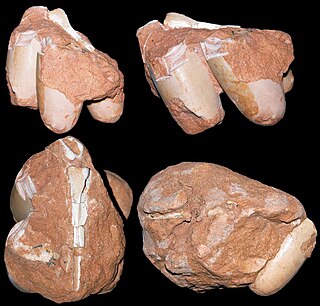 W
WStyloolithus is an oogenus of highly distinctive fossil egg from the Upper Cretaceous Djadokhta Formation and the Barun Goyot Formation in Mongolia.
 W
WTarchia is a genus of herbivorous ankylosaurid dinosaur from the late Cretaceous of Mongolia.
 W
WTsagandelta is a genus of deltatheroidean therian mammal that lived in Asia during the Late Cretaceous. Distantly related to modern marsupials, it is part of Deltatheroida, a lineage of carnivorous metatherians common in the Cretaceous of Asia and among the most successful non-theropod carnivores of the region. It represents the first known mammal from the Bayan Shireh Formation.